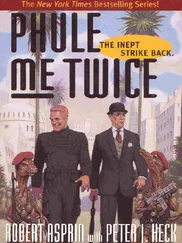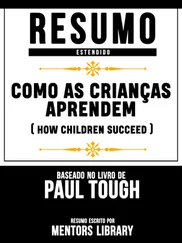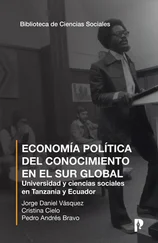Five years earlier, frustrated by Harlem’s seemingly intractable problems, Canada had embarked on an outsized and audacious new endeavor, a poverty-fighting project that was different from anything that had come before it. Since 1990, he had been the president of a well-respected local nonprofit organization called the Rheedlen Centers for Children and Families, which operated a handful of programs in upper Manhattan targeted at young people: afterschool drop-in centers, truancy prevention, antiviolence training for teenagers. They were decent programs, and they all did some good for the kids who were enrolled in them. But after Canada had been running them for a few years, day in and day out, his ideas about poverty started to change.
The catalyst was surprisingly simple: a waiting list. One Rheedlen afterschool program had more children who wanted to enroll than it was able to admit. So Canada chose the obvious remedy: he drew up a waiting list, and it quickly filled with the names of children who needed his help and couldn’t get it. That bothered him, and it kept bothering him, and before long it had him thinking differently about his entire organization. Sure, the five hundred children who were lucky enough to be participating in one of his programs were getting help, but why those five hundred and not the five hundred on the waiting list? Or why not another five hundred altogether? For that matter, why five hundred and not five thousand? If all he was doing was picking some kids to save and letting the rest fail, what was the point?
Canada became less and less sure of what his programs really added up to. Each one was supported by a separate short-term grant, often on a contract from one city agency or another, and in order to keep the money flowing, Canada was required to demonstrate to the foundations and agencies that paid for the programs that a certain number of children had participated. But no one seemed to care whether the programs were actually working. In fact, no one seemed to have given a whole lot of thought to what, in this context, “working” might really mean.
Canada began to wonder what would happen if he reversed the equation. Instead of coming up with a menu of well-meaning programs and then trying to figure out what they accomplished and how they fit together, what if he started with the outcomes he wanted to achieve and then worked backward from there, changing and tweaking and overhauling programs until they actually produced the right results? When he followed this train of thought a little further, he realized that it wasn’t the outcomes of individual programs that he really cared about: what mattered was the overall impact he was able to have on the children he was trying to serve. He was all too familiar with the “fade-out” phenomenon, where a group of needy kids are helped along by one program or another, only to return to the disappointing mean soon after the program ends. Head Start, the government-funded prekindergarten program for poor children, was the classic example. Plenty of studies had determined conclusively that graduates of Head Start entered kindergarten ahead of their inner-city peers. And plenty of studies had shown that a few years later, those same graduates had slipped back to the anemic achievement level of neighborhood kids who hadn’t attended Head Start. A few years of bad schooling and bad surroundings were powerful enough to wipe out all of the program’s gains.
Canada wanted to find a way off the treadmill. So he asked himself a series of questions, and gradually his thinking took shape.
Who did he want to help?
He wanted to help poor children.
What was his goal for them?
He wanted them to be able to grow into fully functioning participants in mainstream American middle-class life.
What did they need to do to accomplish that?
They had to survive adolescence, graduate from high school, get into college, and graduate from college.
And what did he have to provide in order to help them accomplish that?
Well, that was where the questions got interesting, and difficult to answer.
He concluded, first, that his efforts couldn’t be as diffuse and haphazard as they had been. He would need to select a single geographical area and devote all of his energies to that one place. He would have to start intervening in children’s lives when they were young, at birth or even earlier. The support system he provided would need to be comprehensive, a continuous, linked series of programs. It wasn’t enough to help out in just one part of a child’s life: the project would need to combine educational, social, and medical services. And he wanted serious numbers. He wasn’t interested in helping just a few kids, the ones who were already most likely to succeed, the ones whose parents had the resources and foresight to seek out aid and support for themselves and their children.
It was partly a gut feeling, a personal thing: he had always hated the idea of picking and choosing, helping some kids and letting the rest fail. But it was also practical. He believed that in troubled neighborhoods there existed a kind of tipping point. If 10 percent of the families on a block or in a housing project were engaged in one of his programs, their participation wouldn’t have much influence on their neighbors, and the children who did enroll would feel at best like special cases and at worst like oddballs. But if, say, 60 percent of the families were onboard, then participation would come to seem normal, and so would the values that went with it: a sense of responsibility, a belief that there was a point to self-improvement, a hopefulness about the future. Canada’s theory was that each child would do better if all the children around him were doing better. So instead of waiting for residents to find out on their own about the services he was providing, his recruiters would seek out participants by going door-to-door in housing projects and low-rent high-rises. They would create programs that were well organized and even fun to attend, and they would sweeten the deal by offering incentives—everything from a free breakfast to Old Navy gift certificates—to break down any lingering resistance.
At the end of the 1990s, Canada dedicated himself to making his idea a reality. He chose as the laboratory for his grand experiment a twenty-four-block zone of central Harlem, an area that contained about three thousand children, more than 60 percent of whom were living below the poverty line and three-quarters of whom regularly scored below grade level on statewide reading and math tests. He and his staff developed an array of new, integrated programs that followed the life of a child: a parenting class for Harlem residents with children three and under, an intensive prekindergarten for four-year-olds, classroom aides and afterschool instruction for public school students, and a tutoring center for teenagers. Canada’s objective was to create a safety net woven so tightly that children in the neighborhood couldn’t slip through. It was an idea both simple and radical, and he gave it a name to match: the Harlem Children’s Zone.
A FEW YEARS into the life of the Zone, Canada hit a snag. The problem was the schools. His original plan had called for his staff to work closely with the principals of Harlem’s local public schools, providing them with supplemental services like computer labs and reading programs. In some schools the collaboration had worked well, but in others it was a disaster. To Canada’s surprise and displeasure, principals sometimes resisted the help, turning down his requests for classroom space or kicking out the tutors that the organization supplied. Even in the schools where the programs were running smoothly, they didn’t seem to be producing results: the neighborhood’s reading and math scores had barely budged.
Читать дальше



![Коринн МакКей - How to Succeed as a Freelance Translator [calibre 3.46.0]](/books/402693/korinn-makkej-how-to-succeed-as-a-freelance-transl-thumb.webp)








